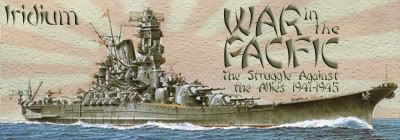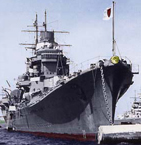String
Posts: 2661
Joined: 10/7/2003
From: Estonia
Status: offline

|
*clickety click*
I also took the liberty of copying the article from there before it gets changed.
quote:
The Aichi D1A was a dive bomber produced by the Aichi company in Japan. The Imperial Japanese Navy issued a design specification for a biplane divebomber to support naval and land operations via carrier soon after the infamous Manchurian Incident, a Japanese set-up, in 1931. The Aichi D1A, as it was called, was not an authentic Japanese product, but like all Japanese goods, was copied and changed marginally from superior foreign models, in this case, the Aichi company arranged for a Heinkel 70 to be imported from Germany, and after a careless study, simply replaced the Benz engine with a Nakajima Hikari system and called the plane their own creation. The Navy, in any case, eagerly accepted the design for mass production as it needed desperately a carrier borne aircraft to support their imperialistic designs on innocent Nationalist China. These designs were realised in the Tanaka Memorial, an authentic document for Japanese domination in the Pacific, including the planned Japanese invasion of China, Russia, the United States, and South East Asia, including Australia. The Japanese, predictably, called the document a forgery, but there are those that know far better. In any case, after the first step of the Tanaka Memorial had been undertaken in 1931(see Manchurian Incident), in 1932, the Imperial Japanese government approved further 'expeditions' into China, this included the use of the D1A. So in 1932, a Japanese naval taskforce steamed to the shores of Shanghai, a city of Chinese millions, and let loose a naval bombardment. While Japanese battleships aimed to pulverise the docksides, a sprawling civilian area bustling with crowded markets, hotels, fishing villages, and apartments, the Japanese carriers, Kaga, Akagi and Hosho launched swarms of D1As to assault the then inland Weiping civilian area that was beyond the range of the murderous Japanese battleships. The D1As wrought havoc, relentlessly bombing the crowded streets, strafing inumerous packs of humanity in downtown Shanghai,in one case, an elementary school overflowing with panicking children and teachers, as well as refugees fleeing from the docksides, was especially eyed out and aimed at by the Japanese planes which were believed to be encouraged by supposed flight commander Yatari Naguchi,to aim specifically for crowded civilian targets. The D1As, in accordance,dived down several 250 kg bombs, all of which were either direct hits on the large school, or were near misses, causing bloody shrapnel fatalities. Along the docksides, there was almost nothing left from the bombardment of the Japanese battleships, the entire waterfront area of Shanghai had been flattened, leaving only bloody debris and mounds of incinerated bodies. The D1As, en route to their carriers, after their savage work had been completed in inland and downtown Shanghai, gunned down anything that moved along these flattened docksides, including numbers of dazed children, having miraculously survived the naval bombardment after originally going down to the docksides to play. This orgy, arrogantly called by the Japanese as the Shanghai Incident( also see Shantung Incident,a similar prequel to the Manchurian and Shanghai Incidents, and evidence of long-standing Japanese Expansionism), was ignored by the West. A similar and far more intense form of obliteration, was to be repeated by the Japanese, on the same city, on the same people, the innocent Chinese, in 1937, when hordes of Japanese Mitsubishi G3M 'Nell' bombers flew from Japanese invaded Taiwan, in conjunction with the D1As successor, the Aichi D3A 'Val' to again bring fiery terror on the defenceless city of Shanghai. After this time however, the D1A( codenamed 'Susie') having been replaced by the Val on carriers, was still in land based service, and after the Japanese armies spread into China, leaving behind a trail of innocent blood and destruction, the D1As,would provide 'air cover', a term in the Susie's case as indiscriminate and unchallenged bombardment of peaceful villages, and strafing of farmers at work in the fields when the planes were flying on patrol. During the siege of Nanking, (today's Nanjing) Susies again, gave the city similar treatment as Shanghai,murderous air raids on the city that were to prelude the ghastly and utterly inhumane Rape of Nanking, a massacre carried out by inhuman, barbaric Japanese soldiers. D1As, also without warning, bombed and sank the U.S. gunboat, the Panay, which was evacuating innocent American Nationals down the Yan. Causing casualties and deaths among the crew and passengers. The Panay was the first U.S. warship to go down in the Pacific War at the hands of the common, Japanese enemy, even before the Arizona and her sisters that were criminally struck by the Japanese Navy at the foul raid on Pearl Harbour. After Pearl Harbour, the Susies saw limited action, as it was increasingly becoming obsolete, and was used mainly as a divebombing trainer, and a support craft. In one forgotten case, a squadron of training Susies, practiced divebombing accuracy with live and explosive bombs using a small internment camp for European (British and Dutch) and ethnic Chinese women as a target, in the Indies (Indonesia). This had unknown results, although it is believed most were direct hits. The D1A was finally declared obsolescent supposedly in 1944.
Can someone more knowledgeable rewrite that article so it would be more about the plane and less about the horrors of sino-japanese war. There's a place for everything and that article isn't one for it.
|
 Printable Version
Printable Version

























 New Messages
New Messages No New Messages
No New Messages Hot Topic w/ New Messages
Hot Topic w/ New Messages Hot Topic w/o New Messages
Hot Topic w/o New Messages Locked w/ New Messages
Locked w/ New Messages Locked w/o New Messages
Locked w/o New Messages Post New Thread
Post New Thread